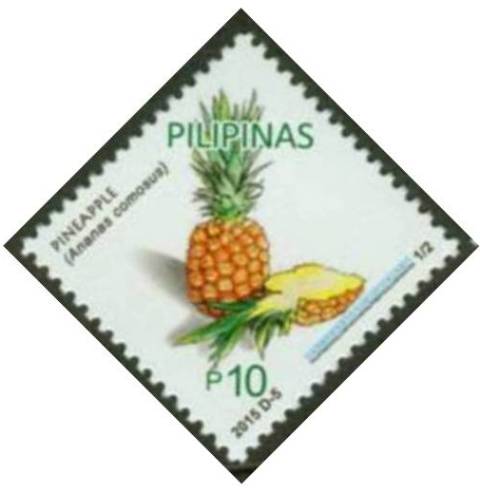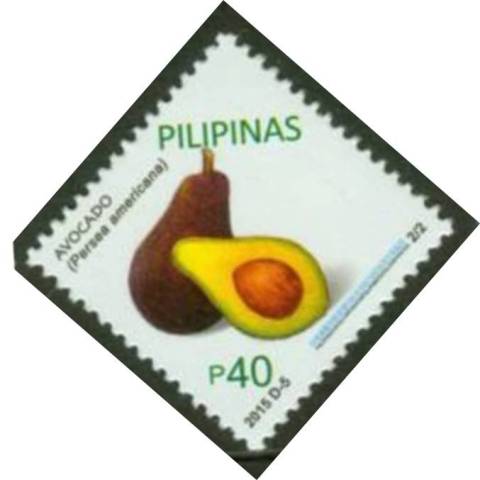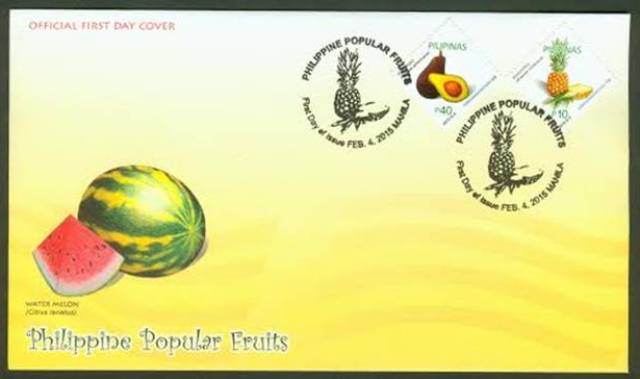2015, February 4. Popular Fruits of the Philippines (Definitives)
Litho Offset, Amstar Company, Inc., Perf 13.5
Singles, Sheets of 100


10p Pineapple (Ananas comosus) - Singles (4,250,000)
40p Avocado (Persea americana) - Singles (2,000,000)
First Day Covers: Manila
Popular Fruits of the Philippines
10p Pineapple (Ananas comosus). The pineapple (Ananas comosus) is a tropical plant with edible multiple fruit consisting of coalesced berries, and the most economically significant plant in the Bromeliaceae family. Pineapples may be cultivated from a crown cutting of the fruit, possibly flowering in 20–24 months and fruiting in the following six months. Pineapple does not ripen significantly post-harvest. Pineapples can be consumed fresh, cooked, juiced, and preserved, and are found in a wide array of cuisines. In addition to consumption, the pineapple leaves are used to produce the textile fiber piña in the Philippines, commonly used as the material for the men's Barong Tagalog and women's Baro't saya formal wear in the country. The fiber is also used as a component for wallpaper and other furnishings. http://en.wikipedia.org/wiki/Pineapple
40p Avocado (Persea Americana). The avocado may have originated in southern Mexico but was cultivated from the Rio Grande to central Peru long before the arrival of Europeans. Thereafter, it was carried not only to the West Indies (where it was first reported in Jamaica in 1696), but to nearly all parts of the tropical and subtropical world with suitable environmental conditions. It was taken to the Philippines near the end of the 16th Century; to the Dutch East Indies by 1750 and Mauritius in 1780; was first brought to Singapore between 1830 and 1840 but has never become common in Malaya. It reached India in 1892 and is grown especially around Madras and Bangalore but has never become very popular because of the preference for sweet fruits. It was planted in Hawaii in 1825 and was common throughout the islands by 1910; it was introduced into Florida from Mexico by Dr. Henry Perrine in 1833 and into California, also from Mexico, in 1871. Vegetative propagation began in 1890 and stimulated the importation of budwood of various types, primarily to extend the season of fruiting. Some came from Hawaii in 1904 (S. P. I. Nos. 19377-19380). https://www.hort.purdue.edu/newcrop/morton/avocado_ars.html
-
Fruits
